 From cottagecore to mermaidcore, it can be difficult keeping up with the latest ‘core’ aesthetic taking over social media. The latest Gen Z, TikTok-driven blog trend to wrap your head around? Well, it’s an unusual one to say the least – say hello to ‘goblincore’. Far more user-friendly than it sounds, goblincore is less about small mythical creatures and more about embracing a wholesome, woodsy vibe. The emphasis is on comfort, grounding and nature – but in an earthier, darker and more realistic way… Key motifs include fungi, snails, moss and frogs, and there’s a focus on natural fabrics and colours – with, of course, a faint whiff of the supernatural. …it’s mostly about spending time in nature – and if the pandemic has taught us nothing else, it’s the value of that.
From cottagecore to mermaidcore, it can be difficult keeping up with the latest ‘core’ aesthetic taking over social media. The latest Gen Z, TikTok-driven blog trend to wrap your head around? Well, it’s an unusual one to say the least – say hello to ‘goblincore’. Far more user-friendly than it sounds, goblincore is less about small mythical creatures and more about embracing a wholesome, woodsy vibe. The emphasis is on comfort, grounding and nature – but in an earthier, darker and more realistic way… Key motifs include fungi, snails, moss and frogs, and there’s a focus on natural fabrics and colours – with, of course, a faint whiff of the supernatural. …it’s mostly about spending time in nature – and if the pandemic has taught us nothing else, it’s the value of that.
 Japan housing activity noticeably improved in July as total starts jumped 9.9% to reach 70,178 units. The results mark the third consecutive monthly improvement. Owner-occupied housing increased 16.2% and rental housing advanced 4.3%. Wooden housing increased 15.5% to 41,156 units. Post and beam starts were up 16.5% to 32,512 units. Wooden pre-fab starts bucked the trend: falling 20.2% to 750 units. However, total pre-fab housing was up 8.6% to 8,981 units. Platform frame starts jumped 16.5% to 7,894 units for the strongest showing in many months. …Total July non-residential starts increased 9.4% to 3,851 units. Total floor area increased slightly by 0.2% to 3.63 million m2. Wooden non-residential starts advanced 14% to 1,496 units. Measured by floor area, wooden non-residential increased 12.8% to 285,943m2.
Japan housing activity noticeably improved in July as total starts jumped 9.9% to reach 70,178 units. The results mark the third consecutive monthly improvement. Owner-occupied housing increased 16.2% and rental housing advanced 4.3%. Wooden housing increased 15.5% to 41,156 units. Post and beam starts were up 16.5% to 32,512 units. Wooden pre-fab starts bucked the trend: falling 20.2% to 750 units. However, total pre-fab housing was up 8.6% to 8,981 units. Platform frame starts jumped 16.5% to 7,894 units for the strongest showing in many months. …Total July non-residential starts increased 9.4% to 3,851 units. Total floor area increased slightly by 0.2% to 3.63 million m2. Wooden non-residential starts advanced 14% to 1,496 units. Measured by floor area, wooden non-residential increased 12.8% to 285,943m2. 






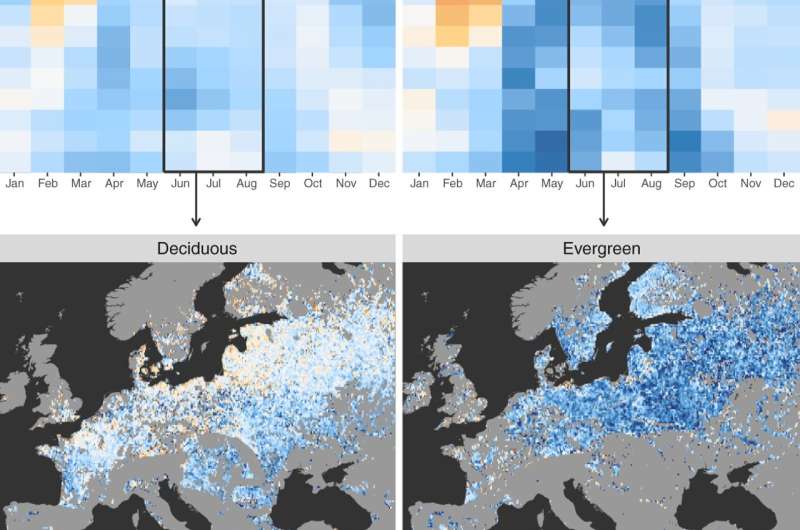


/cloudfront-us-east-1.images.arcpublishing.com/tgam/EWZGGSUHHROVTHAQGKGOCLWTIU.jpg)
/cloudfront-us-east-1.images.arcpublishing.com/tgam/JVLABRXPIRMOLI4Y5XZU2JL46M.jpg)


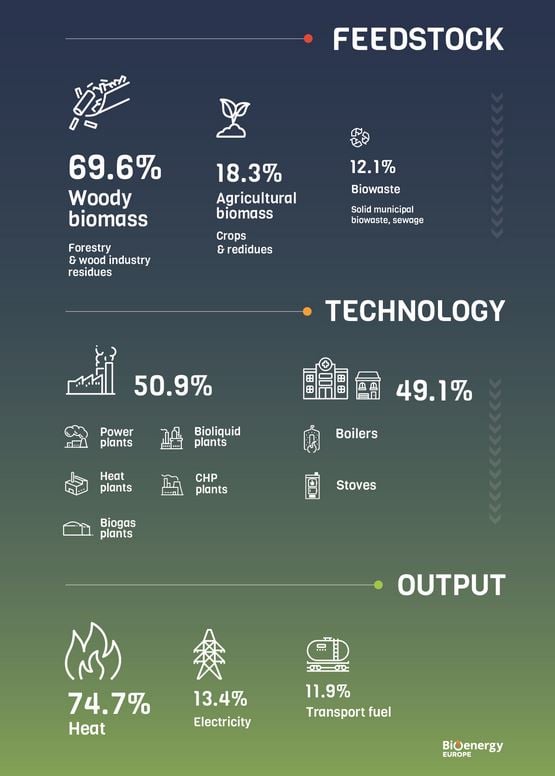

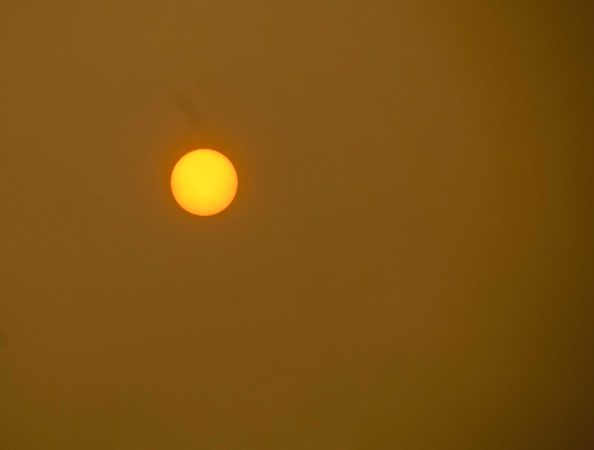 ROME — Stifling heat kept its grip on much of Southern Europe on Thursday, driving people indoors at midday, spoiling crops, triggering drinking water restrictions, turning public libraries into cooling “climate shelters” and complicating the already difficult challenge firefighters faced
ROME — Stifling heat kept its grip on much of Southern Europe on Thursday, driving people indoors at midday, spoiling crops, triggering drinking water restrictions, turning public libraries into cooling “climate shelters” and complicating the already difficult challenge firefighters faced 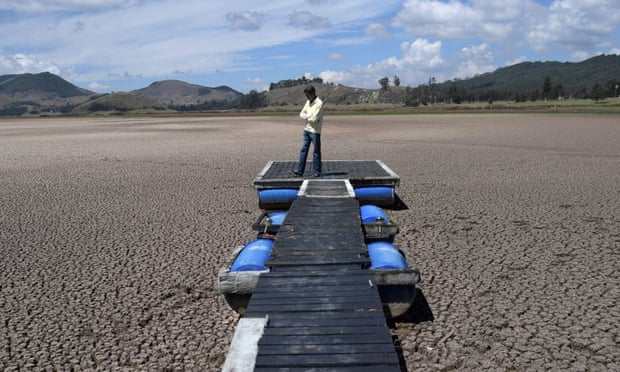
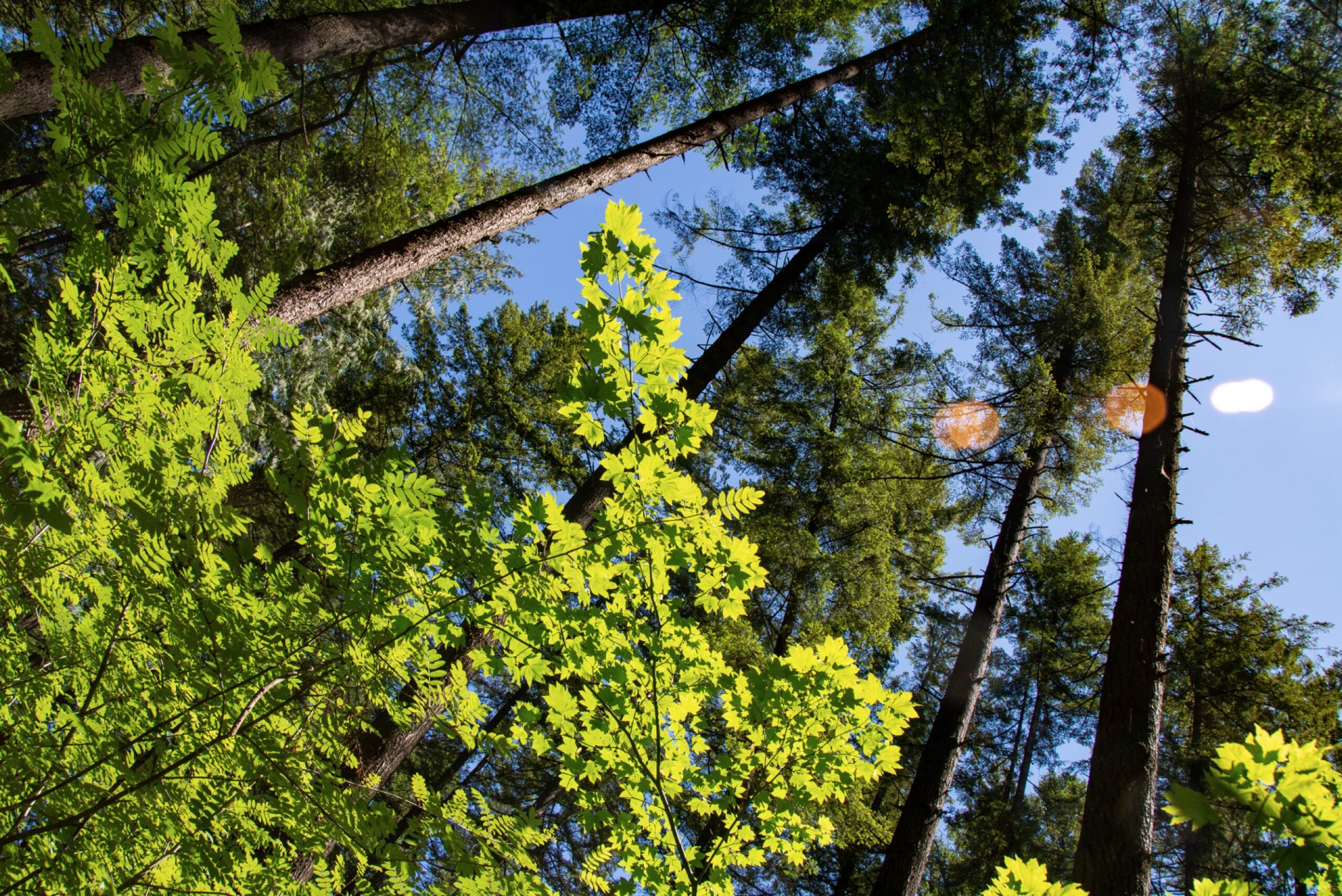 If the EU really wants to deliver on its Green Deal ambitions for climate and biodiversity, the new sustainability criteria in the Fit for 55 package need to be science- and practice-based, enabling a complementary and not competing range of renewables, including bioenergy. …A climate-neutral Europe means a decarbonised energy system. Evolving towards such a system is also central to both the EU’s recovery and its long-term prosperity. More sustainably sourced renewable energy is going to be essential to this evolution in helping fight not only climate change but also biodiversity loss. It’s for this reason that the EU’s 2030 Biodiversity Strategy prioritises solutions such as ocean energy, offshore wind, solar farms, and sustainable bioenergy. …Clearly, if we’re going to successfully decarbonise our energy system, we need a wide range of available renewable energy sources working in tandem.
If the EU really wants to deliver on its Green Deal ambitions for climate and biodiversity, the new sustainability criteria in the Fit for 55 package need to be science- and practice-based, enabling a complementary and not competing range of renewables, including bioenergy. …A climate-neutral Europe means a decarbonised energy system. Evolving towards such a system is also central to both the EU’s recovery and its long-term prosperity. More sustainably sourced renewable energy is going to be essential to this evolution in helping fight not only climate change but also biodiversity loss. It’s for this reason that the EU’s 2030 Biodiversity Strategy prioritises solutions such as ocean energy, offshore wind, solar farms, and sustainable bioenergy. …Clearly, if we’re going to successfully decarbonise our energy system, we need a wide range of available renewable energy sources working in tandem. The forecasted growth in wood pellet production in Europe will increase competition for wood fibre and require new feedstock sources, says a report. Europe’s pellet industry is the largest in the world and is expected to continue to grow strongly, at least until 2025, says WRI Market Insights 2021. …Pellet demand is likely to grow by 30-40% over the next five years, and depending on how imports develop, European production might need to increase by up to ten million tonnes. Europe represents about 75% of global pellet demand and is more diverse in its pellet usage than are other regions. …Experience from North America shows that it is possible to use more forest residues as fibre furnish. Although it yields pellets with higher ash content, it is often a lower-cost raw material than, for example, roundwood and wood chips.
The forecasted growth in wood pellet production in Europe will increase competition for wood fibre and require new feedstock sources, says a report. Europe’s pellet industry is the largest in the world and is expected to continue to grow strongly, at least until 2025, says WRI Market Insights 2021. …Pellet demand is likely to grow by 30-40% over the next five years, and depending on how imports develop, European production might need to increase by up to ten million tonnes. Europe represents about 75% of global pellet demand and is more diverse in its pellet usage than are other regions. …Experience from North America shows that it is possible to use more forest residues as fibre furnish. Although it yields pellets with higher ash content, it is often a lower-cost raw material than, for example, roundwood and wood chips. 

 Firefighters in northern Morocco are battling to put out two forest blazes, a forestries official said Sunday as the North African kingdom swelters in a heatwave. “Non-stop efforts are underway to control the fires which broke out on Saturday afternoon,” said Rachid El-Anzi, director of the water and forestry department in the Chefchaouen region. He said firefighting planes were being used to tackle the conflagrations which had already destroyed some 200 hectares of forest. Several parts of the North African kingdom have seen temperatures of up to 49 degrees Celsius (120 Fahrenheit), according to weather authorities. …He said the cause of the fires was not known, but that they had been spurred by high temperatures and strong winds, which are expected to last into Monday. Morocco joins several other Mediterranean countries that have seen forest fires in recent weeks, including neighbouring Algeria where at least 90 people were killed in wildfires last week.
Firefighters in northern Morocco are battling to put out two forest blazes, a forestries official said Sunday as the North African kingdom swelters in a heatwave. “Non-stop efforts are underway to control the fires which broke out on Saturday afternoon,” said Rachid El-Anzi, director of the water and forestry department in the Chefchaouen region. He said firefighting planes were being used to tackle the conflagrations which had already destroyed some 200 hectares of forest. Several parts of the North African kingdom have seen temperatures of up to 49 degrees Celsius (120 Fahrenheit), according to weather authorities. …He said the cause of the fires was not known, but that they had been spurred by high temperatures and strong winds, which are expected to last into Monday. Morocco joins several other Mediterranean countries that have seen forest fires in recent weeks, including neighbouring Algeria where at least 90 people were killed in wildfires last week.
 Moscow – Forest fires in Russia have burned more than four million hectares across the country, the Russian federal agency for forestry reported Wednesday. The federal agency said a total of 172 out of the 257 active forest fires are in the republic of Sakha in the Russian Far East. Smoke from the blazes in Sakha has spread across the Russian Far East… The Krasnoyarsk emergency department said Tuesday that high levels of smoke were recorded in 896 cities and villages in the region. Since the beginning of 2021, there have been 11,878 forest fires that tore through more than 8 million hectares across Russia, according to figures released by the federal agency for forestry.EFE
Moscow – Forest fires in Russia have burned more than four million hectares across the country, the Russian federal agency for forestry reported Wednesday. The federal agency said a total of 172 out of the 257 active forest fires are in the republic of Sakha in the Russian Far East. Smoke from the blazes in Sakha has spread across the Russian Far East… The Krasnoyarsk emergency department said Tuesday that high levels of smoke were recorded in 896 cities and villages in the region. Since the beginning of 2021, there have been 11,878 forest fires that tore through more than 8 million hectares across Russia, according to figures released by the federal agency for forestry.EFE


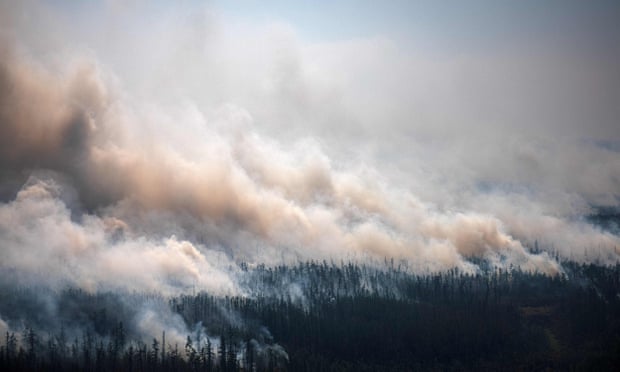

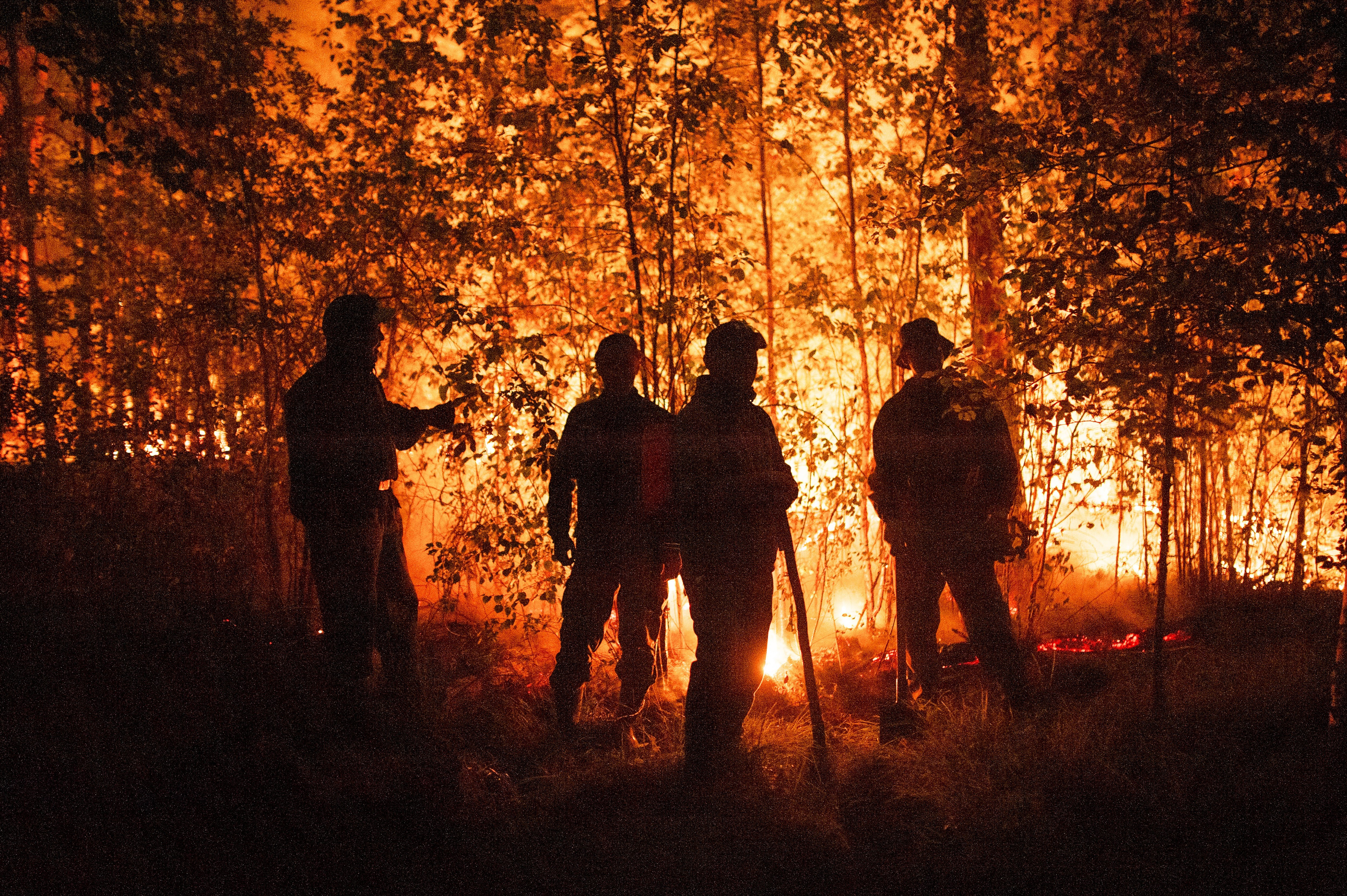

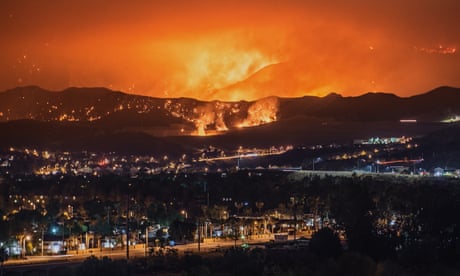 At least 150 houses have been destroyed by a raging fire that surrounded a monastery and a dozen villages on the Greek island of Evia, one of over 100 blazes burning in the country. Firefighters were also continuing to battle a blaze near Athens on Thursday morning, while the mayor of Olympia, pleaded for help as flames threatened the site. The blazes erupted as Greece is in the grip of a heatwave. …Experts have warned that global heating is increasing both the frequency and intensity of such fires. On Evia, the huge flames leaping up from the forest could be seen from the sea. …In outskirts of Athens more than 500 firefighters, a dozen water-bombing planes and five helicopters battled another wildfire. The blaze started on Tuesday in a pine forest at the foot of Mount Parnitha, sending plumes of dark, acrid smoke over Athens and leaving carcasses of burnt-out houses in its wake.
At least 150 houses have been destroyed by a raging fire that surrounded a monastery and a dozen villages on the Greek island of Evia, one of over 100 blazes burning in the country. Firefighters were also continuing to battle a blaze near Athens on Thursday morning, while the mayor of Olympia, pleaded for help as flames threatened the site. The blazes erupted as Greece is in the grip of a heatwave. …Experts have warned that global heating is increasing both the frequency and intensity of such fires. On Evia, the huge flames leaping up from the forest could be seen from the sea. …In outskirts of Athens more than 500 firefighters, a dozen water-bombing planes and five helicopters battled another wildfire. The blaze started on Tuesday in a pine forest at the foot of Mount Parnitha, sending plumes of dark, acrid smoke over Athens and leaving carcasses of burnt-out houses in its wake.


/cloudfront-us-east-2.images.arcpublishing.com/reuters/JWA3MCSJWZIPHE573TDLX7IQDY.jpg)